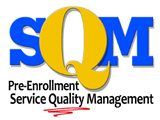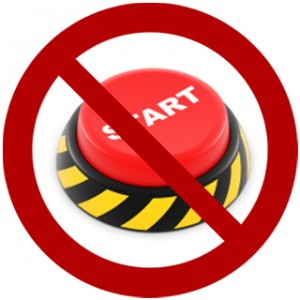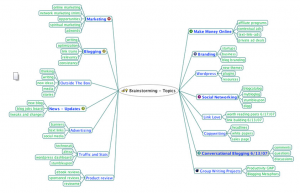It’s Go Time!
Putting your Pre-Enrollment Service Improvement Plan into Action
If you’ve been following our blog for the last two installments, (thank you!), you realize the substantial impact and potential that pre-enrollment customer service has on your institution’s student recruitment efforts. You’ve taken a baseline assessment of your service delivery across many brand touch points, and you’ve created an actionable plan that identifies key issues for improvement and makes everyone accountable. Nice work! You have already accomplished some very important tasks and laid the groundwork for meaningful change at your college or university. You have a clear idea of where you want your organization to be, and now it’s time to start making your way there. The process of transforming the way your organization operates for the better can be both exciting and at times overwhelming, so we have compiled some useful tips for executing your Pre-Enrollment Service Improvement Plan. There are essentially three key components to keep in mind for optimal plan implementation:
1) Spread the Word
 Share the findings from your baseline customer service delivery measurements, and also your clearly articulated goals, with everyone on campus. That means administrators, faculty, groundskeepers, the school mascot, everyone. Each and every person at your institution will have a role in making prospective students feel welcomed and wowed, so it’s key that they are all well-informed and apprised of the plan.
Share the findings from your baseline customer service delivery measurements, and also your clearly articulated goals, with everyone on campus. That means administrators, faculty, groundskeepers, the school mascot, everyone. Each and every person at your institution will have a role in making prospective students feel welcomed and wowed, so it’s key that they are all well-informed and apprised of the plan.
In this day and age of social media, it’s not too difficult to spread the word on the things you do to make prospective students and parent feel great. In addition to creating a formal internal communication announcement, feel free to Facebook and tweet away! Going viral can work to your advantage in this case.
2) Involve
Engage every person on campus in the plan with clear and actionable instructions and objectives. Express to each person how key their role is, and offer specific ways they can get involved towards helping the institution improve its customer service. For example, one of our very successful clients presents every visiting prospective student and family member a bright red Welcome Packet at the beginning of their campus tour and asks them to keep it with them throughout the day. Every employee, professor and even other students know that they should go out of their way to welcome and help those bearing the Red Folder. Research at that campus shows that even though the prospects didn’t know that they were particularly visible, they felt that they had just experienced one of America’s most friendly and helpful campuses.
 Another payoff of including everyone in the master plan is greater cohesiveness and engagement within the school community. Working towards a common goal together will elicit the kind of infectious school spirit and pride that will make your college a desirable place to be.even though the prospects didn’t know that they were particularly visible, they felt that they had just experienced one of America’s most friendly and helpful campuses.
Another payoff of including everyone in the master plan is greater cohesiveness and engagement within the school community. Working towards a common goal together will elicit the kind of infectious school spirit and pride that will make your college a desirable place to be.even though the prospects didn’t know that they were particularly visible, they felt that they had just experienced one of America’s most friendly and helpful campuses.
3) Reinforce
Call out positive behavior. Remember gold stars from grade school? They were effective because everyone likes to be recognized and appreciated for his or her efforts. Have a grownup gold stars system in place to identify and acknowledge exemplary service. Catch folks doing the right thing and celebrate the act. When a groundskeeper is taking particular care to make the campus look good; when the switchboard operator is helping with a smile on her/his face and in her/his voice; when a professor takes the extra minute to visit with a student; applaud the action. Newsletters, bulletin boards, a special  recognition email all can be used to acknowledge excellence in pre-enrollment service. This is another opportunity to utilize the power of social media to broadcast good works and kudos. Give every member of your school the opportunity to be a campus rock star, and they will embrace the challenge.
recognition email all can be used to acknowledge excellence in pre-enrollment service. This is another opportunity to utilize the power of social media to broadcast good works and kudos. Give every member of your school the opportunity to be a campus rock star, and they will embrace the challenge.
If you follow these tips and get everyone engaged in improving the pre-enrollment experience, your campus will soon be buzzing with excitement and radiating excellence and positive energy that are impossible not to notice. You will likely find that your campus becomes a place where others want to be, and also becomes a source of greater pride for those who already call it home.
 Longmire and Company conducts pre-enrollment customer service surveys for colleges across the country. We are more than happy to share the nationally aggregated data we’ve collected and initiatives that colleges have successfully implemented to deliver improved customer service. Just give us a call at (913) 492-1265 or send us a request using our Contact Us page.
Longmire and Company conducts pre-enrollment customer service surveys for colleges across the country. We are more than happy to share the nationally aggregated data we’ve collected and initiatives that colleges have successfully implemented to deliver improved customer service. Just give us a call at (913) 492-1265 or send us a request using our Contact Us page.
 In the last post, we shed some light on the pre-enrollment service perception problem – the fact that colleges and universities are losing potential students due to poor service during the courtship phase. Our studies have revealed that multiple factors such as responsiveness, grounds, food, faculty and admissions personnel strongly shape a student’s overall opinion of the institution and ultimately influence their final decision of where to attend.
In the last post, we shed some light on the pre-enrollment service perception problem – the fact that colleges and universities are losing potential students due to poor service during the courtship phase. Our studies have revealed that multiple factors such as responsiveness, grounds, food, faculty and admissions personnel strongly shape a student’s overall opinion of the institution and ultimately influence their final decision of where to attend. Over the last several years, Longmire and Company has visited many campuses to conduct interactive training workshops for counselors and other staff members who have direct or indirect recruiting responsibility.
Over the last several years, Longmire and Company has visited many campuses to conduct interactive training workshops for counselors and other staff members who have direct or indirect recruiting responsibility.

